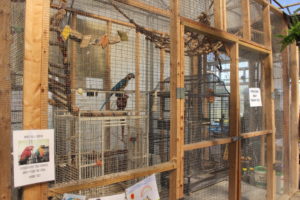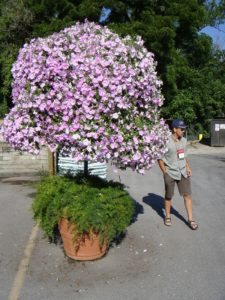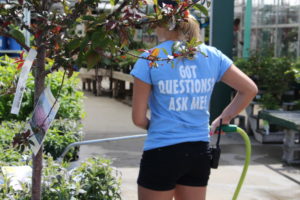Mosquito vs. Mosquito Fish
Richard Paxton’s book The Hot Zone proved that virtually any organism on earth is within a jet ride from our own front door. Be it the invisible Ebola Virus, Mediterranean fruit fly or Russian tumbleweeds, the world is not as large as it used to be. The global village brings greater intimacy with every living thing on earth, breaking down former geographic barriers that separated species and ecosystems.
The advent of West Nile Virus (WNV) is the latest undocumented alien to enter the United States. Coincidentally, it was first identified in Uganda, Africa, in the 1930s, not far from the first outbreak of Preston’s Ebola in Zaire. This virus is the latest in a long string of invasions that makes you wonder whether we can realistically protect wild lands from invasive new plants, waters from exotic fish and the microscopic world from roaming diseases. Perhaps we cannot prevent the invasions, but at least we can mitigate their effects. With WNV, we have the tools to be sure our water garden departments and the customers they serve are adequately informed and protected.
A reader asked me if water gardens are a good idea in light of the mosquito and WNV connection. Ask an authority, and you’ll hear that a well-designed water garden with the proper balance of plants and fish should not be a mosquito breeder. That’s true, but the sad reality is that many water gardens aren’t perfectly balanced nor properly designed; they are created and cared for by amateur gardeners who may not even know how to look for mosquito larvae. And while WNV seems to be on the decline, it will no doubt be lurking in customer’s minds as they peruse your water garden department this spring.
WNV Control
Looking for mosquito larvae illustrates the first step in actively controlling WNV. As a garden center, you must help your customers learn to identify larvae so they recognize the problem as soon as it starts. The mosquito life cycle completes itself in just two weeks; so in a matter of days you can go from egg to winged adult.
Mosquito vector control officials approach the problem through vulnerable phases of the mosquito life cycle. A raft of eggs is laid by the adult insect in still water. These hatch into small, dark, water-borne larvae with a distinctive jerky wiggle when disturbed. In this larval stage they are most easily controlled. If the larvae pupate into flying adults, control becomes far more difficult and toxic.
Excellent information on mosquitoes and details of their life cycle are provided by The American Mosquito Control Association Web site, www.mosquito.org. These are great facts for preparing customer information sheets.
Mosquito Fish
Vector control agencies in many states use tiny ammo for the huge problem of mosquito control. Their first line of defense is a tiny predator mosquito fish, Gambusa affinis. This 3-inch minnow is fast growing, reproduces prodigiously and is a voracious feeder. Their food of choice? Mosquito larvae. Just a few mosquito fish will naturally clean out a whole water garden in days! As long as the fish are there, the water garden remains larvae free.
In California you can go to vector control offices to obtain a little bag of fish. For consumers this is usually a free service. Simply release the fish into a water garden where they live happily with gold fish and other aquatic species. It’s important to find out if your state has a similar mosquito fish program. If so, know where the fish are available so you can share the resource with your customers. Remember: If customers fear mosquito-borne virus in water gardens, you lose future sales to that customer. It’s good for everyone to share the mosquito/fish connection.
Mosquito fish will winter over if overall water temperature doesn’t drop below 33° F. However, they will migrate deeper in the pond where water is warmer if necessary. The fish will survive considerable cold in ponds 3 feet deep or deeper.
Mosquito fish produce offspring at 6-week intervals, and babies start feeding immediately. It is very important to emphasize that Gambusia mosquito fish are for self-contained ponds only and should never be introduced into natural waterways.
Other Methods
In areas where mosquito fish are unavailable or where they cannot winter over, there are other low toxicity approaches to mosquito larvae control. Once again, we go to small biological controls rather than heavy chemical artillery that can damage sensitive water garden environments. In the past, we’ve used Bacillus thiringensis for control of a variety of unsavory larval caterpillars in gardens. A slightly different strain, Bacillus thuringiensis isrealensis, (BTI) works effectively on water-borne mosquito larvae. The bacteria is relatively non-toxic and safe for water garden plants and fish as well as children and pets. For the bacteria to be effective and act on their gastrointestinal system it must be consumed by the larvae.
Various companies produce BTI products, affectionately known as “killer doughnuts,” which were developed under the brand Mosquito Dunks by Summit Chemical Company, Baltimore, Md. Other biological pest control companies have become suppliers of Summit’s BTI products. Dunks are 2-inch floating doughnut shaped tablets that are proven effective killers. Be sure to stock the plastic floating water lily pad in displays. This is a more attractive cover up for tablets.
For smaller applications, BTI is produced in fast-acting “mosquito bits.” These are much easier to use in small water situations like potted plant saucers, birdbaths, pet water bowls and horse troughs. If natural and farm ponds are common in your area, stock large quantity jugs of this product to better serve this expanded need.
Mosquito larvae ingest the killer doughnut bacteria, which kills them within 24 hours. This is a faster acting solution than mosquito fish, but it is more expensive and requires reapplication of product at regular intervals during mosquito breeding months.
Each ring treats 100 sq.ft. of water surface to any depth and lasts 30 days. You’ll have to help your customers calculate the volume of their water garden to find out how many rings they’ll need. Add the proper equations and instructions to your WNV/mosquito prevention handouts to help customers take measurements and do the math.
There is no reason why this virus should take a bite out of your water garden business. Give customers the information and products they need to feel safe and enjoy water gardening guilt free. Thankfully Mother Nature armed us with two tiny predators that become the smart bombs in this age-old war against deadly mosquitoes.
For more information about mosquito-control products visit www.mosquito-control-products.com or the Center for Disease Control at www.cdc.gov/ncidod/dvbid/westnile.

















 Videos
Videos





